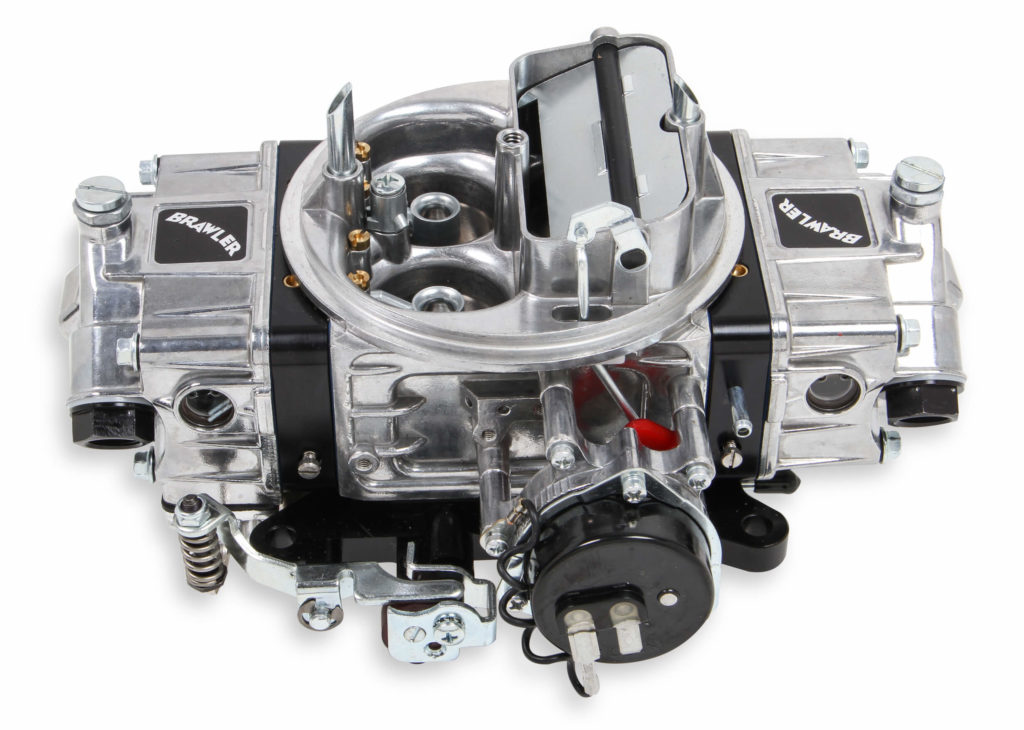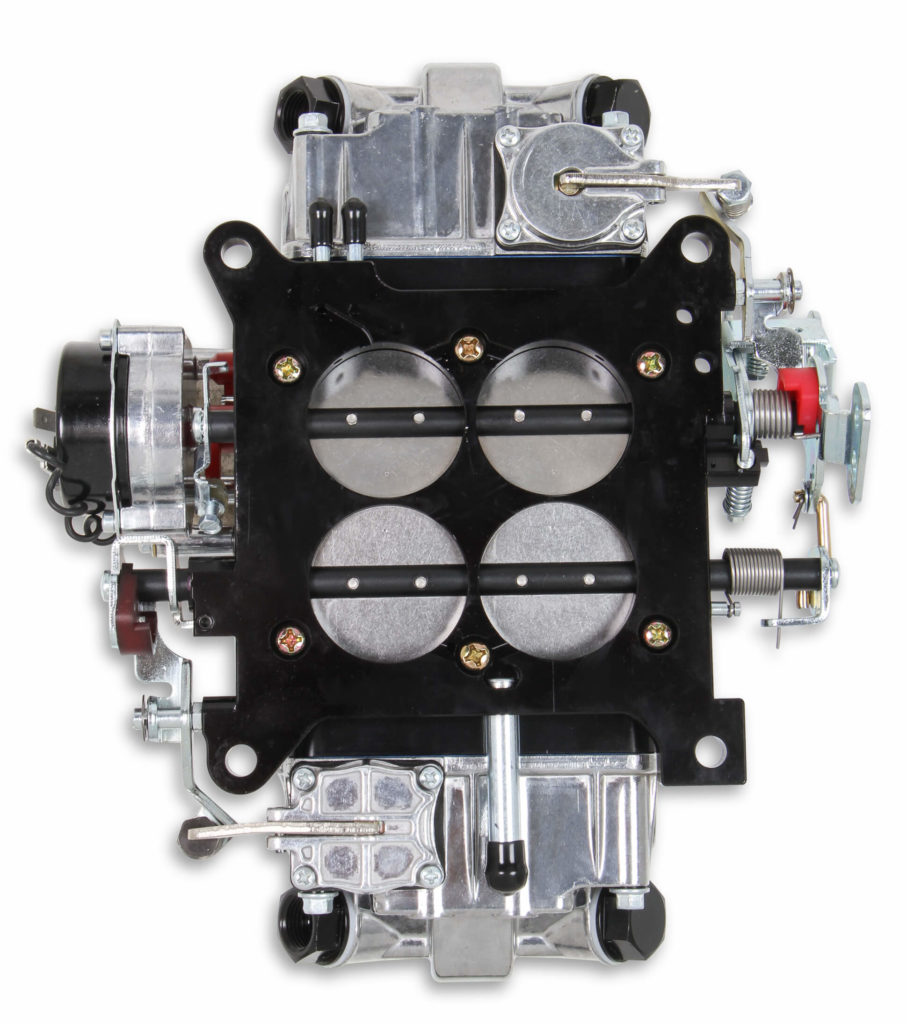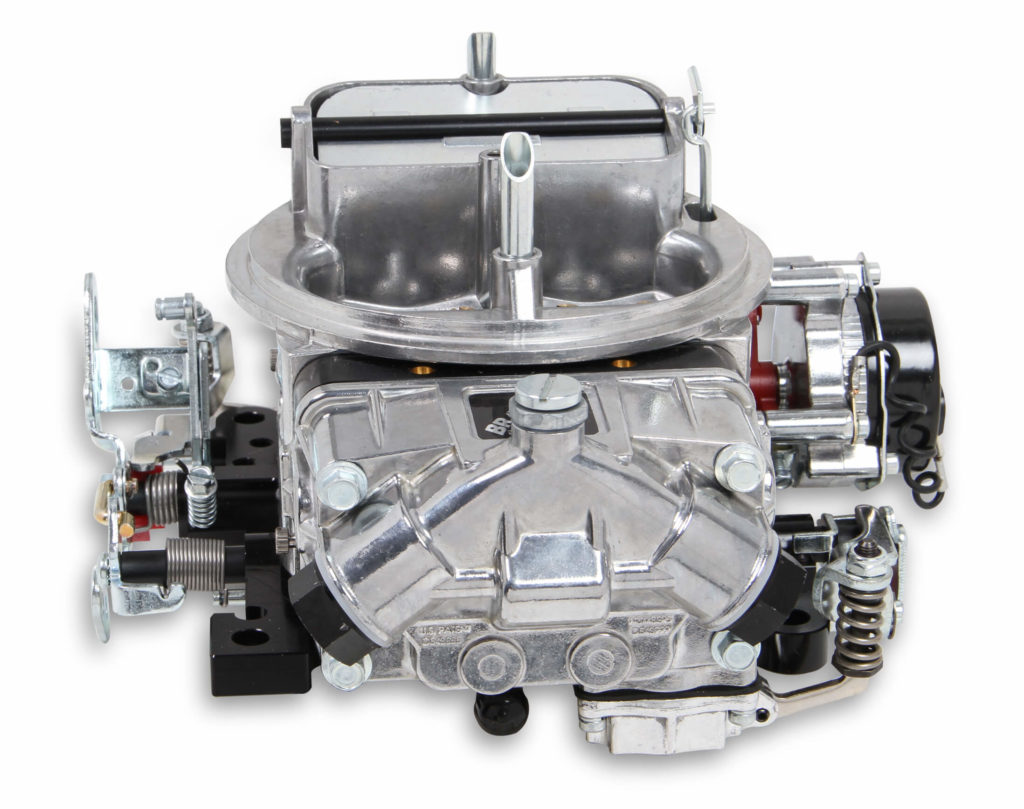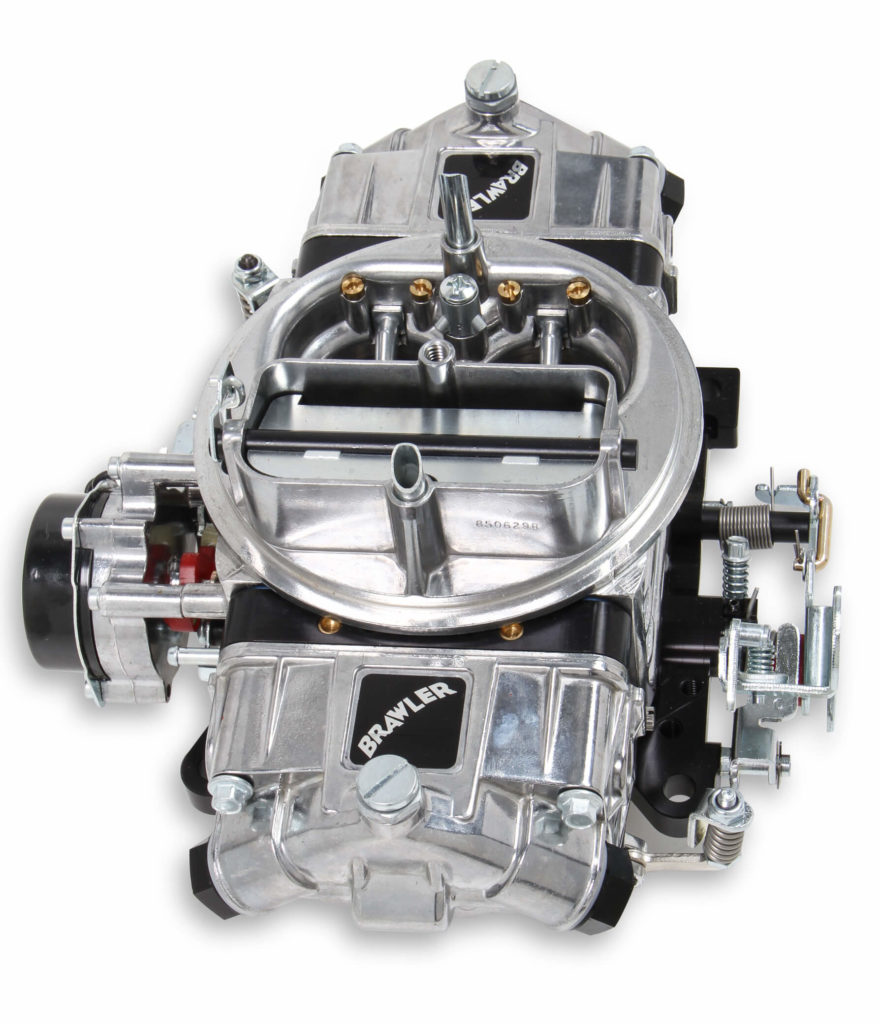A New Carb For A New Engine
Return to the prior page My GT 350
An engine needs fuel and air to operate. The 1968 Ford 302 came with a carburetor. Actually all engines in 1968 had some sort of carburetor. Gasolene enters the carb and is mixed with air that is then drawn into the intake to the pistons. There spark plugs ignite the fuel which causes the assembly to rotate and turn the tires.
Fuel Injection was first used used in 1902 but did not end up on production engines until Mercedes Bosch fuel injection in the 50’s. Chevy offered a Corvette with fuel injection in 1957. At that same time Bosch had perfected the system to start offering it on European cars. Japanese manufacturers offered it across the car lines in the 1970’s. By the mid 80’s carbs were being phased out with Electronic Fuel Injection (EFI) since it was more efficient to meet the government fuel standards.
My engine had a Holley 600 CFM on it. When I bought the car it had an Autolite carb on it. Didn’t take long for me to realize that carb needed a rebuild. I happened to talk to my cousin Max Begley and he told me he knew where a Holley was that had come off a race car. I think I gave $50 for it. I had to swap out the large jets and weld a couple of holes closed in the choke plate. That carb has been on my engine since then. I had the Carb Shop rebuild it a couple of times.
When my engine builder put his finished product on the dyno, he couldn’t get my Holley to work properly. So they swapped it out for an Edelbrock on the shelf. He told me to fix or replace my Holley. I called Pat at the Carb Shop. He couldn’t fix my carb quickly. So I asked him to recommend a replacement that he could ship to me quickly. He suggested a Holley Brawler. And that is what we put on my new engine. I was expecting a new state of the art, dual feed, with mechanical secondaries carb would maximize the performance of my engine.
What I ended up with though was a less the optimum performance. Sorry to learn my engine installer D&D, can’t tune a carb. I talked to Pat at the Carb Shop and have made arrangements to take my car to him next spring.
When I first got my new toy back it ran pretty darn great. But within a short time it started and ran worse and worse. Pat asked me how the electric choke was wired up. Will at D&D wired it up to the starter solenoid. Pat told me that was a bad idea, that the choke needs full time power to work properly so it will open when it needs to. Pat asked me to pull the oil dip stick out and see if I could smell gasoline. Yes. Said to take out a plug and see if it was fouled which it was. Pat told me to wire that choke to the fuse box, do a filter and oil change and install new plugs. And don’t start the engine until I did that. I took it back to Will but he wasn’t able to tune the Carb.
==========================
Holley Brawler Carburetor BR-67211
Billet 600 CFM 4 bbl with Mechanical Secondaries and an Electric Choke
Specs on the Carb
Barrels 4
Billet Color Black
Booster Down Leg
Brand Brawler
CFM 600
Choke Electric
Circuit 2
Emission Code 3
Finish Shiny
Fuel Gasoline
Fuel Inlet Dual
Fuel System Carbureted
High Speed Air Bleed 28
Idle Air Bleed Size 70
Material Aluminum
Model Brawler Street
Primary Main Jet 66
Primary Power Valve 6.5
Primary Pump Nozzle Size 31
Primary Venturii Size 1.300″
Product Type Carburetor
Secondaries Mechanical
Secondary Main Jet 72
Secondary Venturii Size 1.300″
Supercharged Application No
Throttle Bore 1 9/16″
Warranty Limited 90 Day
Part Number BR-67211
This model of carburetor has the square bore flange bolt pattern. It can replace Holley, Edelbrock, Carter AFB, and Autolite style carburetors with 5 3/16″ x 5 5/8″ bolt pattern.




